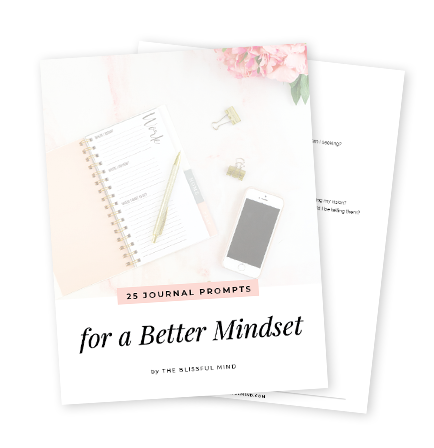The Mindfulness of Surrender: Trusting the Flow of Life Practicing mindfulness of surrender is among the most transformative practices in human psychology as it demonstrates how trusting the flow of life can free you from futile struggles against circumstances beyond your control. The mindfulness of surrender as a practice is liberating and can diminish anxiety and prevent resistance and the relentless need to force outcomes on your own timetable.

Many people in today’s world suffer from chronic stress and anxiety, all because they try to control everything in their lives and fight against naturally occurring rhythms and unanticipated changes. Research in science has shown that surrender is not a form of passivity or resignation; it is an active practice that increases mental clarity, emotional health, and life satisfaction when you practice conscious acceptance of the present moment reality.
Understanding the Mindfulness of Surrender
Mindfulness of surrender is a complex psychological process that integrates present-moment awareness and conscious acceptance of the rhythms of life. The mindfulness of surrender is actually very different from giving up or being passive – it is an active alignment with your life situation as opposed to exhausting yourself to resist what is uncontrollable.
Modern psychology also identifies surrender as a form of emotional intelligence that explicitly communicates the difference between what is within your control and what is not.
Mindful surrender incorporates meditative elements with real-life practice to cultivate a movement practice that is flexible, fluid, and responds to changing situations with ease. Surrendering to the moment reframes challenges as growth opportunities while developing trust for life’s wisdom.
The Science of Surrender for Mental Health
Neuroscientists show that surrender practices regulate the parasympathetic nervous system by down-regulating stress hormones and activating calm alertness. Surrender practitioners will have lower cortisol levels, lower blood pressure, and a stronger immune system than people chronically in patterns of resistance.
Brain imaging indicates surrendering to meditative practices, increased activation of regions of the brain that support emotional regulation, and decreased activation of anxiety and rumination. This neuroplasticity reflects that a surrender practice can literally change your brain to be more at peace and more resilient.
The positive psychology literature shows that surrender maintains and even increases psychological health by decreasing mental suffering generated through resistance to experiences that you cannot change or control. The literature indicates that surrender practices increase satisfaction in life, emotional well-being, and adaptive coping skills through increased connection to the flow of existence.
The Psychology of Control and Resistance
Understanding the deeper reasons humans act out of resistance to surrender provides valuable information about this profound process:
Evolutionary programming – The brain has developed to look for control as a baseline for survival, so surrender feels threatening
Cultural conditioning – The society around us defines surrender as synonymous with failure or weakness instead of wisdom
Attachment to ego – Who we think we are is directly tied to controlling outcomes; therefore, to surrender feels like going against who we are
Fear of vulnerability – Surrender is asking you to deal with limitations and uncertainty; it’s scary and feels risky
Common Misunderstandings of Surrender
There are a number of common misunderstandings that cause people not to experience the benefits of mindful surrender, thereby creating unnecessary resistance to accessing this healing process.
Surrender as weakness is perhaps the most common misunderstanding. Surrender actually requires incredible courage and strength to engage in reality without denial or desperate attempts to control something that is not changeable.
Passive resignation is completely different than mindful surrender. Resignation is to give up hope and effort, whereas surrender maintains engagement but releases attachment to a desired outcome.
Loss of ambition is a concern primarily of people who fear that surrender will produce a loss of motivation. Surrender typically enhances efficacy by placing our energy on actionable items that are left to be done, which prevents unnecessary energy on resistance.
Finally, spiritual bypass is when people use concepts of surrendering as a way to circumvent engaging the responsibility that is changeable. Healthy surrender is about being discerning about whether action is.
Indicators You Should Engage in Surrender
Understanding when surrender would improve your mental wellbeing helps us recognize the circumstances in which surrendering would be more productive to practice surrendering:
The presence of habitual anxiety about what may happen next that you cannot change
The experience of habitual thoughts about situations you cannot change
General tension in your body from your persistence in resisting reality
Exhaustion from forcing things to happen in the timeline you desire
Interpersonal conflicts from your wish to control others
Ways to Practice Surrender Mindfully
In order to build the skills to surrender, you must follow specific practices that help you develop your ability to trust the flow of life while still taking action as needed.
Breathing into acceptance offers immediate practices to enact surrendering resistance. Deep-breathing with intention while mentally releasing your attachment to outcomes shifts your physiology and psychology towards surrender.
Present-moment awareness invites attention into the reality of the moment rather than projecting anxious thoughts about the future. When we practice mindfulness, we support the natural experience of surrender by revealing that this is the only place where life actually takes place.
Body-based surrender happens when you can focus on intentionally releasing physical tension, allowing your body to digest the bracing body-mind states that exist with our resistance. Progressive muscle relaxation will help guide you in body-based surrender practice.
Visualization methods facilitate the act of mental surrender before the surrender is then applied to the challenging conditions. While envisioning yourself as flowing with the circumstances rather than struggling against them, neural pathways are being developed to condition real-life surrender.
Daily Surrender Activities
Practicing surrender in the daily environment shifts typical obstacles to opportunities for spiritual development.
Waking intention – setting the intention to flow with whatever emerges at the start of the day
Traffic delay – Using these delays and challenges as opportunities to practice surrender.
Weather acceptance – Being willing to accept whatever the weather is in the moment, without complaining or resisting it.
Workflow – Creating the tasks with excellence, but releasing the desire to be acknowledged for the value of your work, or being detached from the outcome.

Surrender and Flow state
Awareness of the relationship of surrender and flow state demonstrates how surrendering allows for facilitating performance as opposed to diminishing performance.
Flow psychology shows that peak performance occurs when conscious control evaporates, allowing your natural abilities to work freely. Peak performance is often described by sports athletes, artists, and domain experts as doing their best work while getting “out of their own way.”
Effortless effort occurs during surrender opportunities, as engagement is maintained while letting go of the tension, and forcing that limits or interferes with performance. This state paradoxically achieves the maximum effectiveness with the minimal engagement in strain!
When we surrender creatively, we can allow creativity, inspiration, and innovation to unfold easily without mental pressure for solutions to be made. Many innovative breakthroughs occur when we stop thinking so hard and allow solutions to arise naturally.
Intuitive guidance also comes more easily from surrender practices that reduce mental chatter around forcing control. Commonly, following our inner wisdom gives us greater guidance than rational thought alone.
Surrender in Relationships.
Applying ideas of mindful surrender in interpersonal relationships often shifts conflict into connection:
Accepting others as they are – letting others be who they are, no longer trying to change them to fit our preferences
Letting go of outcomes – connect honestly, without attachment to their preferred ways to respond
Trusting the timing of relationship connections – allowing the natural timing of connections instead of wishing the connection to be sooner
Releasing past trauma – letting go of unresolved anger and resentments that richly poison current relationship connection
Practical Applications of Surrender
Learning to use principles of surrender with particular life challenges helps provide concrete tools for managing stress and increasing peace.
Before an important career transition, a person may need to learn to totally surrender their attachment to preferred timing or desired outcome to a career transition, all while taking efforts on behalf of a career transition. This balance will help to reduce pressure that likely increases anxiety while also supporting what is appropriate to do in the meantime while waiting.
In Health transitions with illness, surrender can be applied that will help support acceptance of current health moments while still taking actions that you think will be leaving you feeling better. This will reduce the additional suffering that many people cause for themselves by resisting the current illness or physical limitation.
Financial matters may become less of a concern as you surrender by shifting focus onto aspects that you can control, like your spending and earnings, while learning how to release energy toward the unknown economic uncertainty you cannot influence.
Family relationships could become healthier as you surrender your attempts to control relatives’ choices and behaviors; releasing these relations opens the door to deeper connections based on acceptance instead of coercive behavior.
Advanced Surrender Practices
When you have established a basic surrender skill set, deeper practices can enhance your ability to trust the flow of life. Of course, these may not be the easiest steps to implement.
Uncertainty tolerance = Becoming ok with not knowing how it will turn out.
Outcome independent = Taking action based on your values, and not being attached to the outcome.
Trust = Staying connected in mind, body, and spirit to something greater than yourself, and trusting that experience may be challenging.
Spontaneously surrendering = Releasing control of something (internally or externally) in real time when you notice resistance.
The Paradox of Surrender and Action
Understanding how surrender and action work together mitigates the familiar error of people unconsciously using surrender to avoid responsibility or effort.
Discernment practice consists of learning to distinguish between an individual’s responsibility to act, or be engaged in action, versus that of simply accepting things as they are. Understanding this distinction assists one in avoiding both passive resignation and futile struggle.
Inspired action is the product of a state of surrender where natural drive and creative ideas pour into action, rather than being forced or obsessively busying oneself.
Engaged non-attachment combines full engagement in the action/experience/ process with non-attachment to outcome. In this way of being, the result is being at one’s most effective, while retaining inner peace, regardless of outcome.
Responsive flexibility develops with practice in surrender, with the outcome of having allowance for action circumstance to change, while still pursuing meaningful intent.
Long-Term Advantages of Surrendering
Individuals who cultivate a robust surrender practice see significant improvements in mental health and satisfaction with life, and those improvements commonly build cumulatively.
Anxiety is reduced since we can now see that there is no mental struggle associated with resisting what cannot be changed. The relief you feel is often far greater than medication or therapy has to offer.
Creativity is enhanced in surrender as mental control is minimized. A person’s mental patterns of control and resisting what can be are often enemies of creativity. Many artists, inventors, and innovators have shared that their best work comes through surrendering to the inspiration of their creation.
By giving up control over the behavior and responses of others and accepting them as they are, surrender releases the mental and emotional need to control others, enhancing connection. Relationship development then becomes free of manipulation based on acceptance.
Spirituality reaches greater heights in the practices of surrender when the personal will aligns with the wisdom of something greater than the self, or as a result of the natural flow of life. The personal will gives way to meaning and purpose that are greater than the ego.
Finally, the reduction of stress and the ability to calm the nervous system, as a result of surrendering, bring physical health benefits. Lowering inflammation and enhancing immune function are commonly reported.

Establishing Your Surrender Practice
Consistently practicing surrender behavior takes a systematic approach that considers challenges you have on a daily and deeper level of control and resistance.





